Stars are massive plasma spheres that are held together by gravity. As you are probably aware, the Sun, located in the core of the Solar System, is the closest star to Earth. It is around 1,392,684 kilometers in diameter. The size of our core star is tiny compared to many other stars found in the Universe. Due to their great distance, certain additional stars are visible from Earth throughout the night, appearing as numerous fixed bright spots. Historically, the most significant stars were gathered together to form constellations, and the brightest stars were given names to distinguish them from the others. The Top 10 Biggest Stars in the Universe are shown in the list below.
Sirius
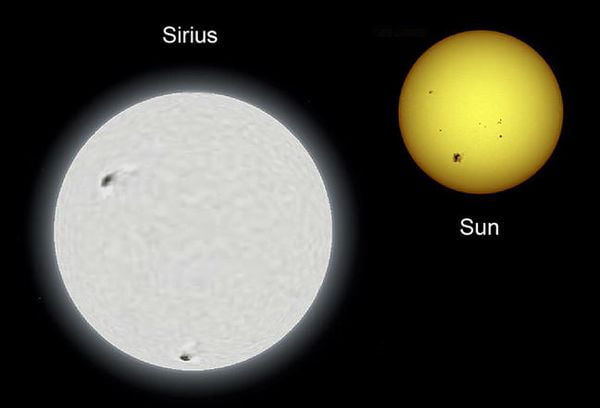
Approximately 200 to 300 million years have passed since the birth of the largest stars in the night sky. You can see the star from almost every location on the planet’s surface. Approximately 8.6 light-years separate the Sun and the Earth from one another. It is about twice as massive and 25 times more luminous than the Sun following mass and brightness. Its radius is 1.2 million kilometers, 71 percent more than the Sun’s. The temperature on the surface is about 9,940 K.
Pollux
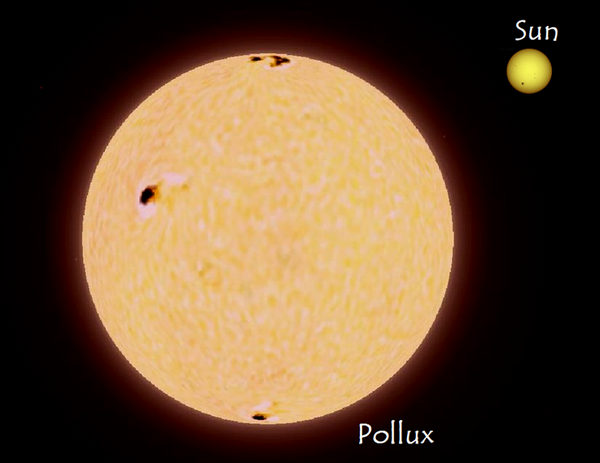
Nearly 34 light-years away from Earth, a bright orange massive star with twice the mass of the Sun has a radius of 5,564,000 kilometers, making it approximately nine times bigger than the Sun. Pollux is the Gemini constellation’s brightest star. The average surface temperature is 4,865 K.
Arcturus
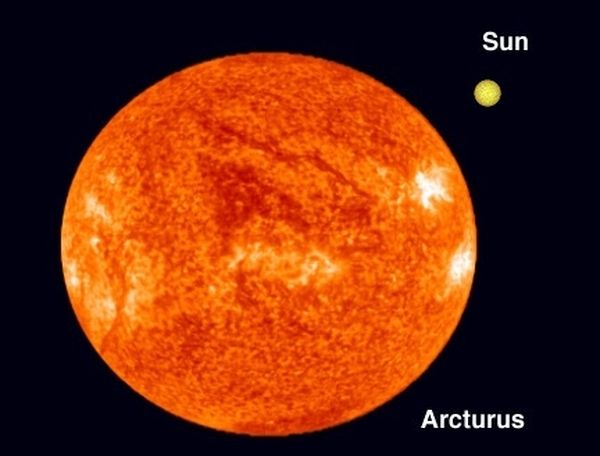
In the constellation of Botes, Arcturus is the brightest red massive star (the Herdsman). It is the fourth-brightest star in the night sky, after Sirius, Canopus, and Alpha Centauri. We’re around 36.8 light-years away from this star. About 25 times the size of the Sun, Arcturus has an estimated radial distance of 17,870,000 kilometers. Arcturus is somewhere around 7.1 billion years old, and its core has most certainly started melting helium into oxygen and carbon. The average surface temperature is 4,290 K. Eventually, it will run out of helium, peel off its outer layer, and transform into a white dwarf within the context of a planetary nebula.
Aldebaran
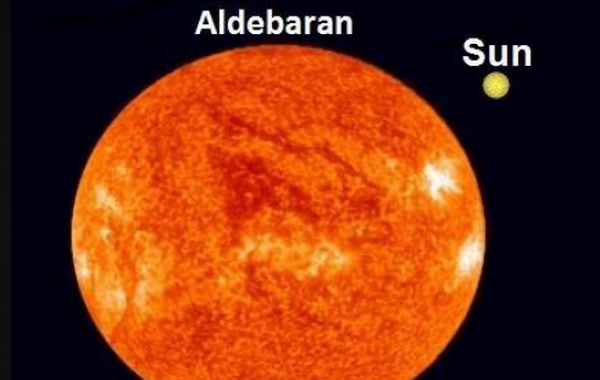
Aldebaran is a massive bright orange star in the constellation Taurus, situated around 65 light-years distant. With a radius of around 30,740,000 km, Aldebaran is approximately 44,2 times the size of the Sun. The temperature on the surface is about 3,910 K. In comparison to the Sun, Aldebaran has a brightness that is 425 times greater. It’s 65.1 light-years distant, according to calculations.
Rigel
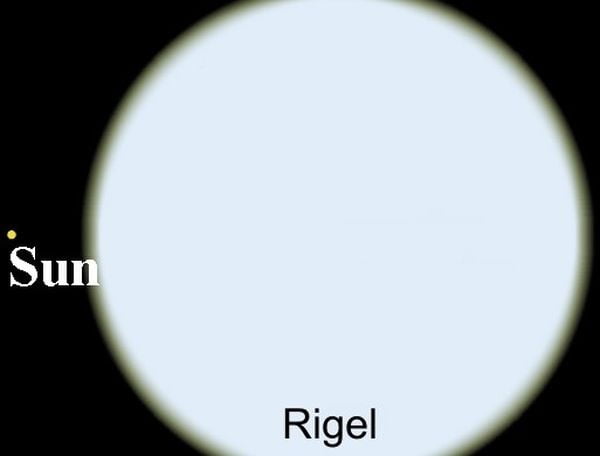
One of the most luminous stars in the night sky is in the constellation Orion and is the seventh brightest in the night sky. It is about 12,000 times more shining than the Sun. Rigel is mainly visible at night in the northern and southern hemispheres during the winter and summer months. Around 860 light-years separate it from us. With a radius of 54,250,000 km, it is nearly 78 times the size of the Sun. There is approximately 11,000 K of temperature on the surface of the star.
Antares
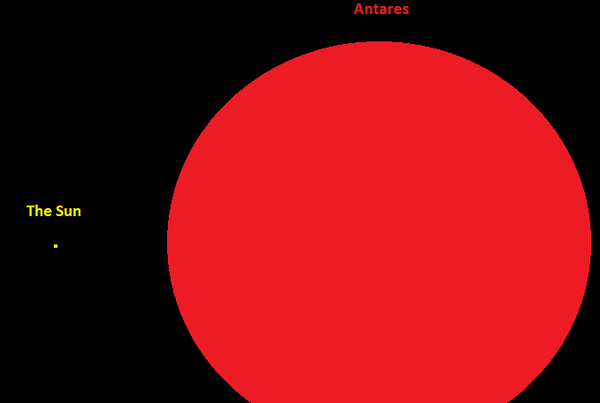
Antares is the constellation of Scorpius’s brightest star. It has a radius of around 850 times that of the Sun and is 12 times more massive. If it were put at the solar system’s center, it would extend beyond Mars’ orbit. About 550 light-years separate us from the star. Its brightness is about 57,500 times greater than that of the Sun. At around 12 million years old, Antares is reaching the conclusion of its life cycle and will go supernova in about a million years. The main sequence of low-mass stars like our Sun has been in existence for many billion years. The temperature at the surface is about 18,500 K.
Betelgeuse
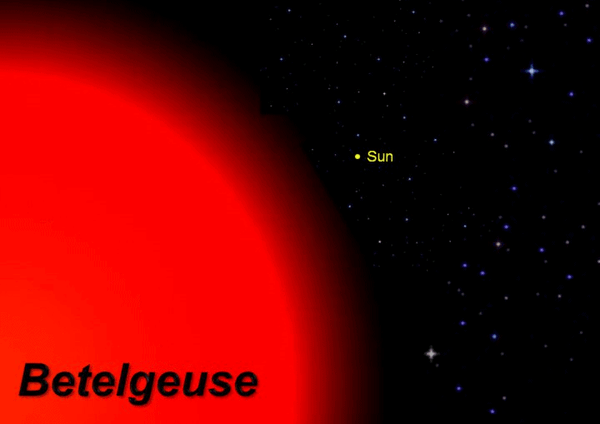
Betelgeuse, a red supergiant star, is the ninth among largest stars in the dark sky. Aside from that, it is the second most shining star in the constellation of Orion. 640 light-years distant from Earth, this star has a mass that is 20 times greater than that of the Sun. Around 820,700,000 kilometers is the radius of Betelgeuse. Red supergiants of a particular age, such as the Betelguese, are regarded to be on the verge of extinction. It has a radius more than 1200 times that of our Sun. Approximately 3,600 K is the surface temperature.
Mu Cephei
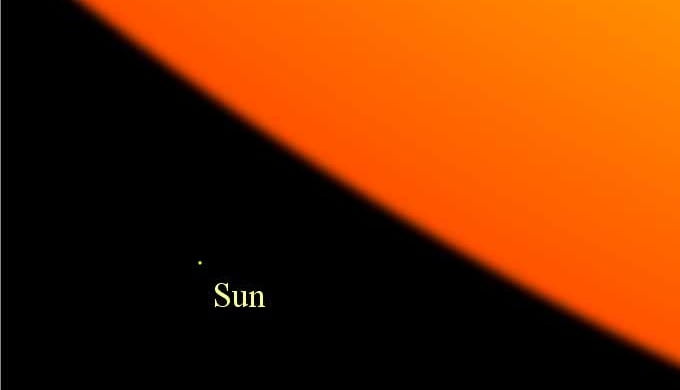
Found in the constellation Cepheus, Mu Cephei is a supergiant red star. In terms of size and luminosity, it is one of the Milky Way’s most prominent stars. Mu Cephei is located roughly 6000 light-years away. Having 20 times the mass of the Sun, it has a radius of 988,036,000 km. The temperature at the surface is nearly 3,690 K. Mu Cephei is very close to the end of his life. It has converted helium into carbon, while a main-sequence star fuses hydrogen to helium. According to the helium-carbon cycle, Mu Cephei is approaching the conclusion of its life cycle and may explode as a supernova as a consequence. It is about 38,000 times brighter than the Sun.
VV Cephei

VV Cephei is a star in the constellation Cepheus 4,900 light-years away from Earth. HD 208816 is another name for VV Cephei. Temperatures on the surface are roughly 3,600K. This red hypergiant star’s radius is predicted to be between 1,050 and 1,100 times the Sun.
VY Canis Majoris
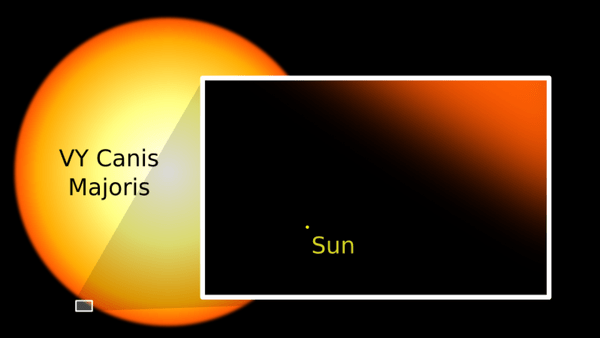
The constellation Canis Major contains this hypergiant. It is the biggest known star in terms of diameter and one of the brightest stars of its kind. It has a radius roughly 1,540 times of the Sun and a mass that is 25 times. It is about 270,000 times more bright than the Sun. If it were to be put in our solar system, it would almost approach Saturn’s orbit. Earth is about 4,900 light-years away from this star.




